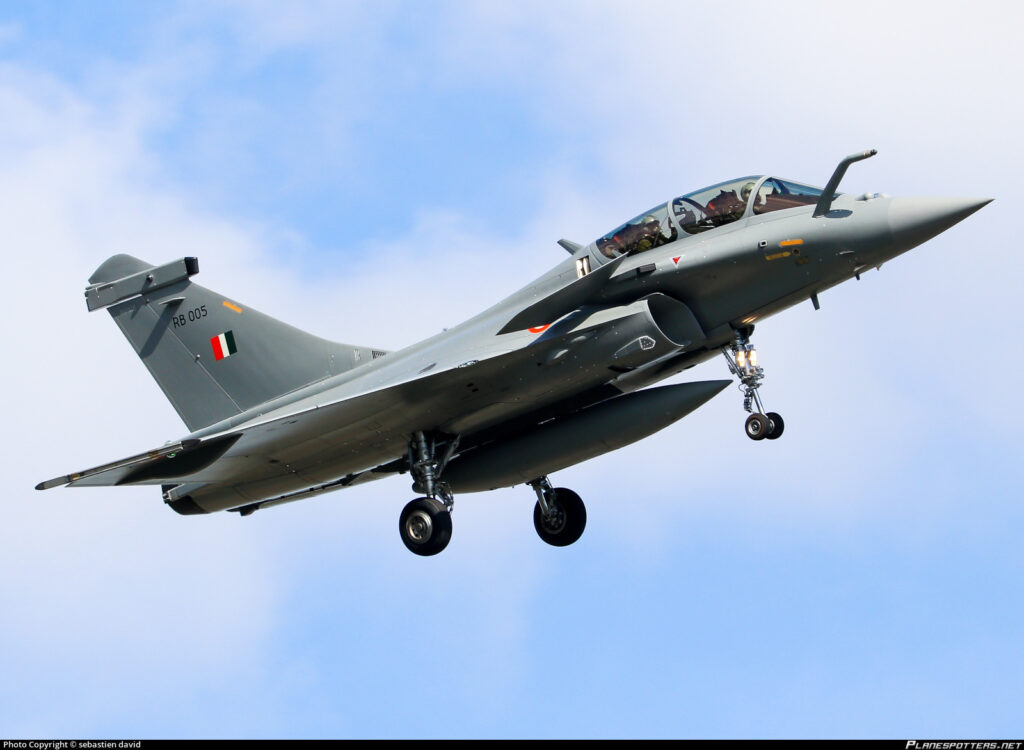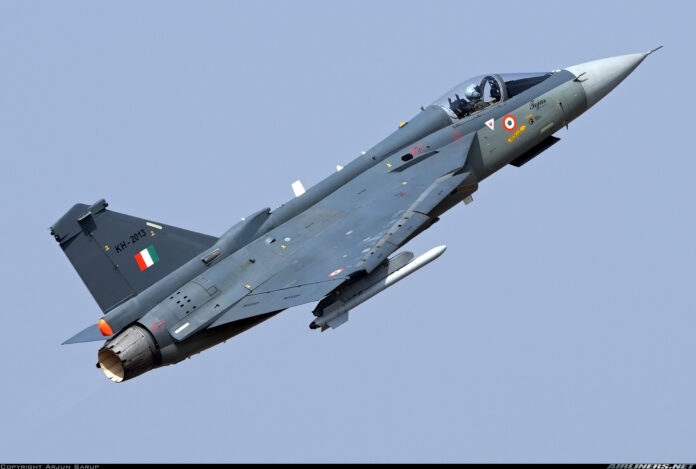By Bikram Vohra

If I’m going to be brutally honest—and really, is there any other way to have a conversation with real purpose? —Then let’s pin this butterfly to the board, wings outstretched, even if it feels a bit uncomfortable. In these times after the Sindoor phase, clarity is our best ally, and that means starting with the basics, not pretending to know what I don’t.
Let me say it: I have no idea what exact strategic limitations were placed on our pilots. No top-secret briefings land on my desk each morning, and I won’t pretend. But what baffles me, and what fills me with an urgent curiosity, is the narrative floating around—that somehow, in recent air battles, we ‘lost’ to Chinese-built J-10s and JF-17s; that these jets, supposedly, outmanoeuvred our own.
It’s an uncomfortable impression, and, frankly, one that deserves questioning. Battles are never won or lost by machines alone—human skill, circumstance, and above all, the choices made by those at the controls and in command, are just as important. If limitations existed, strategic or technological, shouldn’t we examine them openly? Shouldn’t we ask how decisions were made and challenge the easy answers?
Let’s go step by step. No way IAF pilots are inferior to those of any country. If they were under a restraining order, it would not be a fair fight. We are told in little, tantalizing whispers that when the orders were rescinded and corrections made, things evened out. And we gained the upper hand. Since it is unclear what the texture of these ‘no go, no do’ factors is, we cannot make a genuine appraisal of our performance against the enemy in the first 48 hours of the conflict. Speculation is pointless. That’s as pointless as making rude remarks about the capabilities of the Rafale for gaining political points.
If there were some orders of this nature, it would go against every tenet of sending a force to war and tying its hands. Will we ever know? These waters are so muddied that they are opaque. But that said, India does need to reevaluate its airpower and its potential for penetration.
At the very outset, let’s talk about fundamental strength.
As of recent reports, the Indian Air Force (IAF) operates around 30 to 32 squadrons. This number fluctuates due to factors such as aircraft retirements, induction of new aircraft, and ongoing modernization efforts. The IAF aims to bolster its squadron strength and reach its target of 42 squadrons in the coming years through various procurement programs and the development of indigenous aircraft. This is long overdue and it makes no sense to delay any further.
Can we wait as much as a decade before these boxes are ticked? Compounding this shortsightedness is the fact that a significant portion of the IAF’s fleet comprises older aircraft that will not meet modern combat requirements and will be vulnerable to the barrage of highly sophisticated, guided munitions.
Old jets are not capable of outwitting advanced weaponry, and on the ground, they are challenging to maintain, which compromises their operational readiness.
Suppose Op Sindoor’s hush-hush prevarication is the yardstick. In that case, concerns arise regarding the technological advancements of the IAF’s aircraft in comparison to potential adversaries, particularly in areas such as stealth and advanced avionics. Do we have a competitive level of avoidance systems and can our current technology neutralise a threat? Can we see a day very soon when autonomous drones (loyal wingmen) work alongside manned fighters in perfect unison?
There has also been a massive lag in indigenous manufacturing. While efforts like the Tejas program are underway, the production of aircraft has not yet reached anywhere near the desired levels to reduce reliance on imports by fast-tracking indigenous aircraft development.
As of now, the Indian Air Force (IAF) has received around 40 Light Combat Aircraft (LCA) Tejas, with additional aircraft in various stages of production and testing. Another 83 are on order.
The Tejas Mark 3 is an advanced variant of the Light Combat Aircraft (LCA) Tejas project, designed to enhance the capabilities of the Indian Air Force (IAF) with advanced avionics, supercruise capability that reaches Mach speeds without afterburners, increased range, and enhanced stealth capabilities. It must be given topmost priority. We cannot wait till 2030 to fill in the gaps.
Are we as a force still in a 1971 mode? It is a fair question. Communication and combined exercises with other arms will strengthen communications, and this mindset should extend to international joint operations.
Integration with other branches of the armed forces for joint operations may need improvement in terms of communication and coordination.
Modern weaponry requires specialised training. With AI kicking in, we have to realise we have an enemy extraordinaire capable of taking us on in ways we cannot imagine. And it is available to everyone. Still in its nascent stage, artificial intelligence can be utilized in multiple ways, and the command and control of this massive power can be reworked. Country to country, some are more sophisticated than others. How do you create a viable defence when you don’t know the extent of the enemy’s command of AI applications?
Between the Kargil and Balakot incidents, we developed our precision strike capability and demonstrated it dramatically in the Sindoor strikes. High-altitude bombing accuracy has also been significantly improved. In many ways, the Pahalgam incident and the aftermath have raised some very valid flags and given us a timely warning.

Future fights demand stealth (AMCA), networked tactics with drones, which integration is now mandatory, and missile avoidance techniques in capsule time to replace Legacy fleets. The MiG-21s, which are thankfully being phased out, will no longer be part of the fleet.
The Evolution and Global Demand for Fifth and Sixth-Generation Fighter Aircraft
In the contemporary security landscape, the demand for advanced military aviation technology—specifically fifth- and the emerging sixth-generation fighter aircraft—is reaching unprecedented levels. Geopolitical tensions and active conflicts in regions such as Ukraine, Taiwan, and the Middle East have intensified existing requirements for technological superiority in the air domain. Simultaneously, the progressive obsolescence of staple platforms such as the F-16 Fighting Falcon and the MiG-29 Fulcrum is prompting a global fleet renewal, with air forces seeking replacements that not only surpass previous generations in performance and survivability but also address the increasingly complex requirements of modern warfare.
The present international market is notably dominated by U.S. and European manufacturers, with the United States’ fifth-generation fighters—particularly the F-35 Lightning II—holding a substantial share. The F-35, a stealth multirole aircraft available in three variants (A, B, and C), exemplifies the current zenith of fighter capabilities, boasting a blend of low observability, advanced avionics, and multirole flexibility. With over 900 units delivered worldwide, it has become the backbone of many allied air forces. The F-22 Raptor, while no longer in production, remains a benchmark for air superiority due to its unmatched stealth and dogfighting capabilities. Similarly, legacy platforms like the F/A-18 Super Hornet continue to undergo upgrades to remain relevant, reflecting the transitional nature of this technological era.

Europe, a competitive and innovative region, is advancing its own platforms and collaborative programs. The Eurofighter Typhoon and Dassault Rafale, both categorized as “4.5 generation” fighters, have become pillars of European air forces; they integrate upgraded radars, sensors, and weapons, and continue to secure export contracts. Saab’s Gripen E offers a compelling solution for smaller countries, prioritizing cost-effectiveness and upgradability. Moving forward, Europe is heavily investing in next-generation projects, including the Franco-German-Spanish Future Combat Air System (FCAS), which targets operational status by 2040, and the UK-led Tempest program, joined by Italy and Japan, both of which envision a leap to sixth-generation capabilities, including enhanced networking, artificial intelligence, and optionally manned operation.
Russia and China, challenging Western pre-eminence, have positioned themselves as alternative suppliers with both cost advantages and advanced technology. Russia’s Sukhoi Su-35, a highly manoeuvrable “4++” generation fighter, and the low-observable Su-57, although facing production constraints, represent its push for relevance. The forthcoming Su-75 “Checkmate,” which targets export markets, is indicative of Russia’s adaptive approach toward cost-sensitive clients. China’s rapid progress is equally notable: the J-20 Mighty Dragon stands as the country’s flagship fifth-generation fighter, deployed in increasing numbers, while the development of carrier-based stealth fighters, such as the J-35, reflects its ambition for a blue-water naval presence. Export-oriented variants such as the FC-31 are positioned to appeal to states seeking lower-cost alternatives to Western systems.
Despite the evident advantages of fifth and prospective sixth-generation fighters, acquisition costs remain a critical concern, exemplified by the F-35’s price tag—approximately $80 million per unit. Such figures are prohibitive for many air forces, prompting continued demand for more affordable options, such as the Gripen E or India’s Tejas. In response, manufacturers are increasingly offering attractive financial packages, including extended payment plans and technology transfer arrangements, to secure contracts in a competitive marketplace.
The strategic value of these platforms extends far beyond traditional “line of sight” combat. Modern fighters serve as networked arsenals, capable of projecting power and conducting strikes at long distances, integrating seamlessly into broader, multi-domain operational frameworks. The evolution toward sixth-generation fighters intensifies this trend, emphasizing connectivity, sensor fusion, and manned-unmanned teaming—ultimately rendering older paradigms of air combat obsolete.
Bikram Vohra is the Consulting Editor of Indian Aerospace & Defence.



